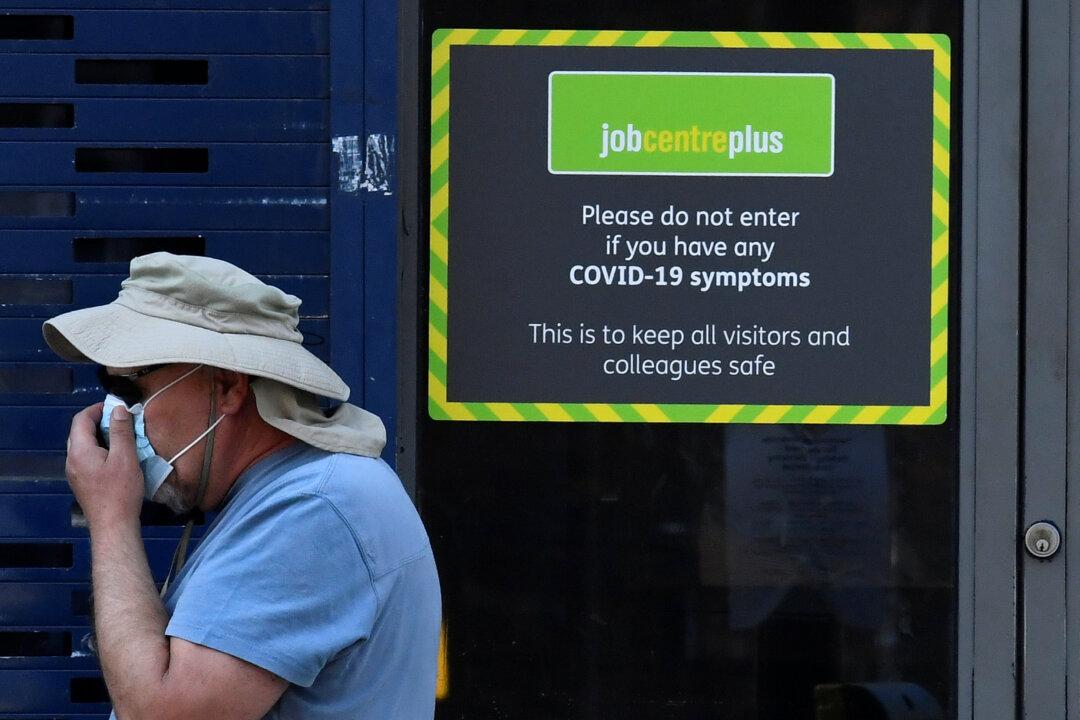Prime Minister Boris Johnson said on Aug. 11 that there are “bumpy months ahead” for jobs, as UK employment numbers suffered their biggest quarterly fall since 2009, according to recent government survey data.
Meanwhile, a separate survey showed that one-third of British employers are expecting to have to lay off workers in the third quarter.





